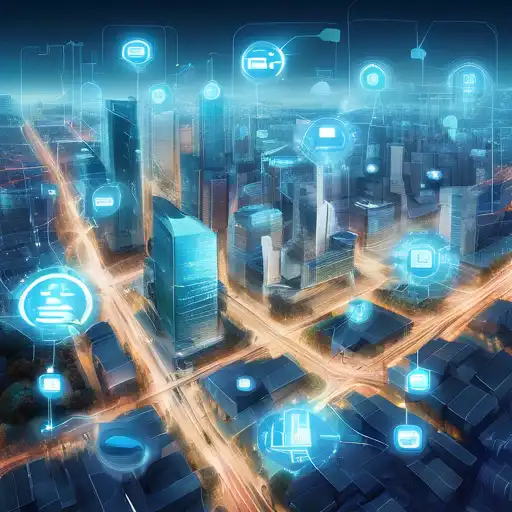Introduction to IoT in Smart Cities
The Internet of Things (IoT) is revolutionizing the way urban areas operate, making cities smarter, more efficient, and more sustainable. By connecting devices and systems across a city, IoT enables real-time data collection and analysis, leading to improved decision-making and enhanced quality of life for residents.
Key Components of IoT in Smart Cities
Smart cities leverage IoT through various components, including sensors, networks, and data analytics platforms. These elements work together to monitor and manage urban infrastructure, from traffic lights to water supply systems, ensuring optimal performance and reducing waste.
Benefits of IoT in Urban Environments
- Enhanced Efficiency: IoT devices automate and optimize city operations, reducing energy consumption and operational costs.
- Improved Public Safety: Real-time monitoring of public spaces and infrastructure helps prevent accidents and crimes.
- Sustainable Development: IoT supports environmental monitoring and resource management, contributing to greener cities.
- Better Quality of Life: Smart solutions like intelligent transportation systems reduce commute times and improve air quality.
Challenges and Solutions
Despite its benefits, implementing IoT in smart cities faces challenges such as data privacy concerns and high initial costs. However, with robust cybersecurity measures and public-private partnerships, these obstacles can be overcome.
Future Prospects
The future of IoT in smart cities is bright, with advancements in AI and 5G technology expected to further enhance connectivity and innovation. As cities continue to grow, IoT will play a pivotal role in shaping sustainable and resilient urban futures.
For more insights into how technology is transforming urban areas, check out our article on Digital Transformation in Urban Planning.
Conclusion
The integration of IoT into smart cities represents a significant leap forward in urban development. By harnessing the power of connected devices, cities can address pressing challenges and create more livable, efficient, and sustainable environments for all.
